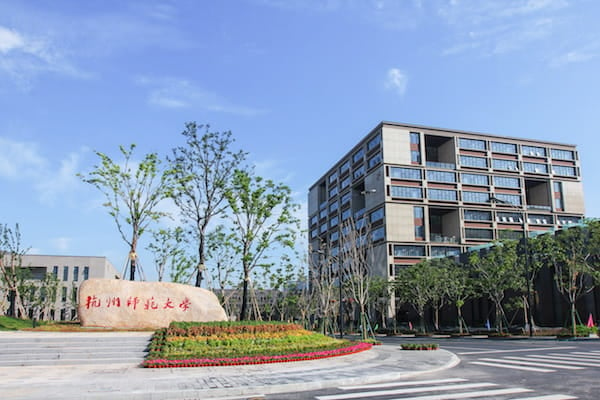
Jiangxi University of Technology
![]()
Introduction to Jiangxi University of Technology
Jiangxi University of Technology (江西科技学院, JXUT) was established in 1994. It is a full-time private undergraduate college with engineering, management and art as its main subjects and coordinated development of multi-disciplines. It has the right to grant the national recognized general enrollment and the qualification of specialized academic qualifications, as well as the right to confer bachelor’s degree. The school is located in Nanchang, a famous historical and cultural city in the south of the Yangtze River and the capital city of Jiangxi Province, which enjoys the reputation of “Hero City”.
Jiangxi University of Technology has 12 secondary colleges and 3 teaching departments, including Auto Engineering College, Mechanical Engineering College, Information Engineering College, Civil Engineering College, Management College, Finance and Economics College, Foreign Language and Foreign Trade (International Education) College, Art Design College, Music and Dance College, Clothing College, Nursing College, Culture and Media College.
The College of Foreign Languages and International Business (FLIB), originally named the Department of Foreign Languages, was established in 1994. Currently, the FLIB offers 4-year undergraduate 4 programs in English, Japanese, International Economics and Trade and Business English and 3-year diploma programs in Business English and International Trade, among which International Economics and Trade is the provincial characteristic major which has been appraised as provincial international trade personnel training experimental zone. The FLIB has English Language department, Business English department, International Economics and Trade department and College English department,and it constantly regards foreign languages as the carrier and foreign language skills as the tool, and it focuses on cultivating the students’ humanistic quality and strengthening their practical ability which is considered to be a basic principle of the specialty construction. Moreover, The FLIB closely follows the development trend of international business and trade, based on knowledge-imparting, focusing on training professional ability, treating quality-oriented education as talents training objective. So far, it has fostered a good many applied talents with solid foundation, wide caliber and innovative spirit, who march towards modernization, go into the fields related to international communication and trade, management, education, etc.
![]() Campus Video
Campus Video
“Aerial Photo” of Jiangxi University of Technology
“Hello,Alma Mater”
Campus VR
![]() Foreign Faculty
Foreign Faculty
![]() About Nanchang
About Nanchang
Nanchang (![]() Panorama) is the capital of Jiangxi Province in southeastern China. Located in the north-central part of the province, it is bounded on the west by the Jiuling Mountains and on the east by Poyang Lake. Because of its strategic location connecting the prosperous East and South China, it has become a major railway hub in Southern China in recent decades. Nanchang, named as Hero City is a cultural city with long history. It is a state-list famous historical and culture city with over 2200 years of history. Nanchang is known as National Civilized City, International Garden City, and National Landscape Garden City, attracting more and more people from different countries for traveling.
Panorama) is the capital of Jiangxi Province in southeastern China. Located in the north-central part of the province, it is bounded on the west by the Jiuling Mountains and on the east by Poyang Lake. Because of its strategic location connecting the prosperous East and South China, it has become a major railway hub in Southern China in recent decades. Nanchang, named as Hero City is a cultural city with long history. It is a state-list famous historical and culture city with over 2200 years of history. Nanchang is known as National Civilized City, International Garden City, and National Landscape Garden City, attracting more and more people from different countries for traveling.
Transportation
- 2h 30mins to Hangzhou by rail
- 3h 30mins to Shanghai by rail
Food
Nanchang cuisine belongs to Jiangxi cuisine, characterized by crisp, fresh, spicy and salty taste. Local vegetables appear in almost every dish with the use of wild flowers also common, like the rest place of south China, rice is staple with pork usually substituting beef as the main meat used, and chicken is also widely used. Nanchang is famous for its food, spice is added to most dishes and frying is main form of cooking.
Weather
Nanchang has a monsoon-influenced humid subtropical climate with four distinct seasons. Winters are short and cool with occasional frosts; it begins somewhat sunny and dry but becomes progressively wetter and more overcast. Spring begins especially gloomy, and from April to June, each month has more than 220 mm (8.7 in) of rainfall. Summer is long and humid, with amongst the highest temperatures of any Chinese provincial capital, and with the sun shining close to 60 percent of the time in July and August, is the sunniest time of year. Autumn is warm to mild with the lowest rainfall levels of the year. The monthly 24-hour average temperature ranges from 5.5 °C (41.9 °F) in January to 29.5 °C (85.1 °F) in July, while the annual mean is 18.00 °C (64.4 °F).
![]() Teaching Program
Teaching Program
![]() ISAC University Teaching Program
ISAC University Teaching Program
![]() Related Universities
Related Universities















